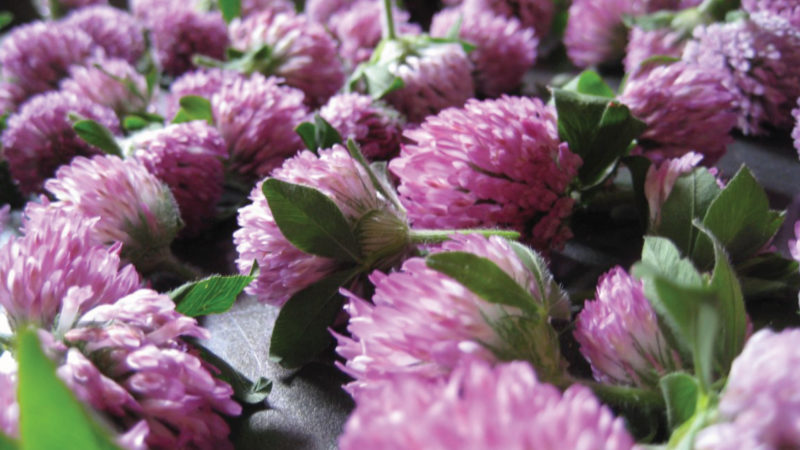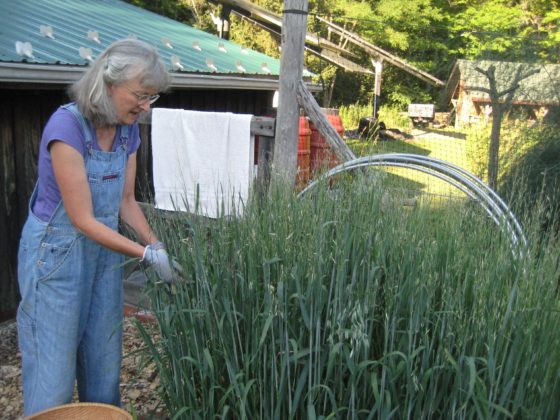
Content contributed and originally ran on Lacuna Loft’s website at: https://lacunaloft.org/herbs-help-body-heal-part-2/.
In my life and herbal medicine practice, I have come to view health challenges as opportunities to connect more deeply with nature– particularly with plants that offer support and nourishment for body and spirit. This is the second article in a series of three, exploring plants that nature offers those of us living with and recovering from cancer.
Nourishing Tonic Herbs
In the herbal Materia Medica—the array of medicinal plants in our tool kit— I admit that I play favorites. Though I’m grateful for potent, low-dose plants during times of illness, I champion tonic herbs. Rather than aiding healing during brief periods of sickness, tonics are incorporated into one’s regular diet to support wellness. They are gentle and nutrient-dense. When used casually, tonics are nutritious food. When used regularly, research and traditional knowledge demonstrate notable “medicinal” effects on various body systems.
Stinging Nettle Leaf
Stinging nettle (Urtica dioica) is the tonic I use most commonly. It grows like a weed in moist, partly shaded places, especially along creeks. Nettles have a reputation for being rich in vitamins and minerals, including calcium, magnesium, iron, and vitamin C. Though some nutritious leafy herbs have a bitter flavor (ie. dandelion leaf), I find nettles slightly sweet and pleasant.

Nettles are a mild, nourishing tea for anytime.
According to David Hoffman’s Medical Herbalism, “Nettle is one of the most widely applicable plants in the materia medica. The herb strengthens and supports the whole body. Throughout Europe, nettle is used as a spring tonic and general detoxifying remedy” (591). When used regularly, the leaf has a reputation for easing arthritis, seasonal allergies, skin ailments, anemia and more (Gilbert, 303).
Though nettle tea is readily available to purchase, nettles are easy to wild-harvest yourself. Be sure of identification; a quick brush of the hand along its stinging hairs will serve as confirmation. Wear gloves when you harvest, unless you desire the circulation-stimulating sting that some intentionally seek! (It’s called “urtication.” Think bee sting therapy). Once nettle leaves are crushed, cooked or dried, they lose their sting and are as safe to eat as spinach. Harvest in spring or early summer before they flower.
Red Clover
I often see Red clover (Trifolium pratense) blooming in open fields during the summer. The bright pink flowers are edible, slightly sweet and nutritious. Like other legumes, the plant contains a range of isoflavones, or phytoestrogens (plant estrogens).
Phytoestrogens can outcompete more aggressive estrogens for estrogen receptors in the body. They may also offer a gentle estrogenic presence when our body is low on its own estrogens. Some practitioners recommend eating soy for these phytoestrogens, suggesting they can ease menopausal symptoms and prevent certain cancers for some. However, many practitioners caution that conventional soy products are poorly digested unless they are fermented, as tempeh and miso are.
Red clover bridges the gap between these camps. The phytoestrogens in red clover flowers are much more gentle than those in soy. Though red clover leaves can be tough on some stomachs, the flowers are easily digested for most people. Plus, those pretty blossoms are irresistible in a teacup, or tossed into salad.
Feel free to harvest red clover blossoms yourself. Eat or make tea from fresh flowers, or thoroughly and quickly dehydrate them. If any of the flowers look brown, discard them.
Oat Straw
Oat straw (Avena sativa) comes from the same plant that produces our hot breakfast cereal. For those less familiar with herbs, I love offering such a common plant in a different way. The straw has traditionally been used as mild and mineral-rich tea. According to Dr. Sharol Tilgner, the plant is rich in calcium, iron, manganese, and zinc. The developing seed of the plant, or “milky oats,” are a source of protein, and used as a calming nervous system tonic (Tilgner, 128).

Peggy Fitzgibbon harvests milky oats from her garden in western NY
Red Raspberry Leaf
If you enjoy the taste of black or green tea, Red Raspberry leaf (Rubus idaeus) is the herb I recommend to you. Its tannins are reminiscent of a delicate black tea, without the caffeine. Tannins create an astringent effect, gently toning the tissue of the gastrointestinal and reproductive systems (Hoffman, 578). Like the other herbs we’ve discussed, it is highly safe and shown to be suitable for pregnant and breastfeeding mothers (Gilbert, 316).
Raspberry leaf carries a nutritional bonus. One study found that the leaf is significantly higher in antioxidants than the berry, pound for pound. It is rich in calcium, potassium, magnesium, iron, and a range of trace minerals and vitamins (Wilkins).
Sourcing and Preparation
All of these herbs shine when consumed in tea form. A longer steep is required to extract minerals and other desirable constituents. Place 1 tsp – 2 Tbsp herb per cup of water in a jar or mug. Pour boiling water over the herb, cover with a lid or plate, and steep 4-12 hours. Strain and enjoy warm or cold. A little honey is a nice way to jazz up your cup.
Though these plants can be harvested yourself, they can easily be purchased as well. Mountain Rose Herbs is an affordable and ethical source of a range of dried herbs. Feel free to mix and match to make your own tea blends. Since the herbs we’ve discussed are mild in flavor, I like to add peppermint or holy basil to my blend for an aromatic kick.
Happy sipping!
For educational purposes only. These statements have not been evaluated by the FDA. These products are not intended to diagnose, treat, cure, or prevent any disease.
Sources:
Cech, Richo. Making Plant Medicine. Williams: 2016. pp. 231-232.
Gilbert, Cyndi, ND. The Essential Guide to Women’s Herbal Medicine. Toronto: 2015. pp. 303-305, 316.
Hoffman, David. Medical Herbalism. Rochester: 2003. pp. 578, 591.
Marlowe, Maria. “Is Soy Healthy or Not?” Huffington Post, June 2014. www.huffingtonpost.com/wellness-today/diet-and-nutrition_b_5503375.html
Tilgner, Sharol. Herbal Medicine: From the Heart of the Earth. Pleasant Hill, 2009. pp. 128, 142.
Wilkins, Elena. “Benefits of Red Raspberry Leaf Tea.” Vegalicious. May 2014. www.vega-licious.com/benefits-red-raspberry-leaf-tea/
———————————————————————————————
Community Herbalist Sarah is a native of Buffalo NY, and a 2014 graduate of the Holistic Herbalism program at the Blue Ridge School of Herbal Medicine. For Sarah, herbalism is the perfect combination of natural gardening and permaculture, forest ecology, counseling skills, anatomy/physiology, nutrition, world culture and history, botany and chemistry, art, writing, and connecting with nature. She has been offering consultations since 2014, and was excited to incorporate the CSA model (Community Supported Agriculture) into her work in 2015. Sarah also has a certificate in horticultural therapy, and loves using gardening as a venue to support healing and wellness.
Please remember this post is the opinion of the author and should not be replaced for actual medical advice or attention. Please learn more and always speak with your physician before making lifestyle changes yourself. Lacuna Loft supports healthy living. Find what works best for you!
Join the Conversation!
Leave a comment below. Remember to keep it positive!